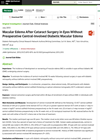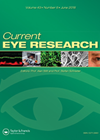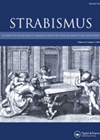You searched for "cataracts"
Intraocular surgical training – is there any inter-procedural transfer of skills?
1 June 2018
| Eulee Seow
|
EYE - Cataract, EYE - Refractive
|
assessment/formative feedback, cataract surgery, simulation-based training, vitreoretinal surgery
Cataract surgery is the most commonly performed surgery during ophthalmology training. This study aims to investigate how experience in simulated cataract surgery impacts and transfers to the learning curves for novices in vitreoretinal surgery. Twelve ophthalmology residents without previous experience...
Macular oedema after cataract surgery in diabetic patients
1 December 2013
| Lorraine North
|
EYE - Vitreo-Retinal
The authors describe a multi-centre prospective observational study of 293 participants that underwent cataract surgery who all had diabetic retinopathy without definite central-involved macular oedema. Forty-five clinical sites took part throughout the United States. Patients were eligible if there was...
Diclofenac versus Bromfenac after cataract surgery
1 April 2019
| Kurt Spiteri Cornish
|
EYE - Cataract, EYE - Refractive
|
Non-steroidal anti-inflammatory drugs, bromfenac, cataract surgery, diclofenac, intraocular inflammation
Non-steroidal anti-inflammatory drugs (NSAIDs) are commonly used after cataract surgery to reduce inflammation and cystoid macular oedema (CMO). Diclofenac 0.1% is used three to five times daily for 28 days and Bromfenac 0.09% twice daily for 14 days postoperatively. The...
Predictors for developing strabismus after paediatric cataract surgery
This study investigates the predictors for strabismus development in patients with paediatric cataract and their final visual acuity. The aim was to improve the treatment of both deprivation and strabismic amblyopia after surgery. The study included 46 children; 21 male,...Characteristics of neuro-ophthalmic visual disturbances post-cataract surgery
2 August 2024
| Lauren R Hepworth
|
EYE - Neuro-ophthalmology
The authors present a retrospective case review of adult patients seen by neuro-ophthalmology over a nine-year period. The aim of the study was to identify the cause of neuro-ophthalmic referrals within six months of cataract surgery. Individuals already known to...
Light in darkness – manual small incision cataract surgery in India
Cataract has been documented to be the most significant cause of bilateral blindness in India, where vision <20/200 in the better eye on presentation is defined as blindness [1,2]. Estimation of blindness in India by the World Health Organization (WHO)...How effective is nurse-led telephone preassessment for cataract surgery?
25 July 2023
| Colver Ken Howe Ne, Tabitha Kusi-Yeboah, Madhavan S Rajan
|
EYE - Cataract, EYE - Refractive
Cataract surgery is the most frequently performed surgical procedure in the UK [1]. The demand for cataract surgery is projected to increase with ageing population, and the recent pandemic has further contributed to the extended waiting times in the UK....
New SpaMedica site opens in Bexhill-on-Sea
SpaMedica, which specialises in NHS cataract surgery and YAG capsulotomy, will help to significantly reduce waiting times for East Sussex patients.Joined-up working across Worcestershire eyecare system provides best service for patients
The sight-saving work of an independent eye clinic has been praised for the high quality of service it provides for patients.Ophthalmic viscoelastic devices: Useful insights for a novice cataract surgeon
4 February 2025
| Kaki Tsang, Qasim Mansoor
|
EYE - Cataract
Ophthalmic viscoelastic devices (OVDs) are essential in many different stages of cataract surgery. This article discusses the categories of OVDs and their respective properties, and highlights their uses in different scenarios faced in cataract surgery. Ophthalmic viscoelastic devices are gel-like...
The results of the last survey Dec22
1 December 2022
| Amar Alwitry
|
EYE - General
I am regularly faced with litigation whereby the claimant’s cornea has decompensated after cataract surgery. The procedure may have been complicated but sometimes it is not. The eye may have been high risk, for example, a shallow anterior chamber with...








